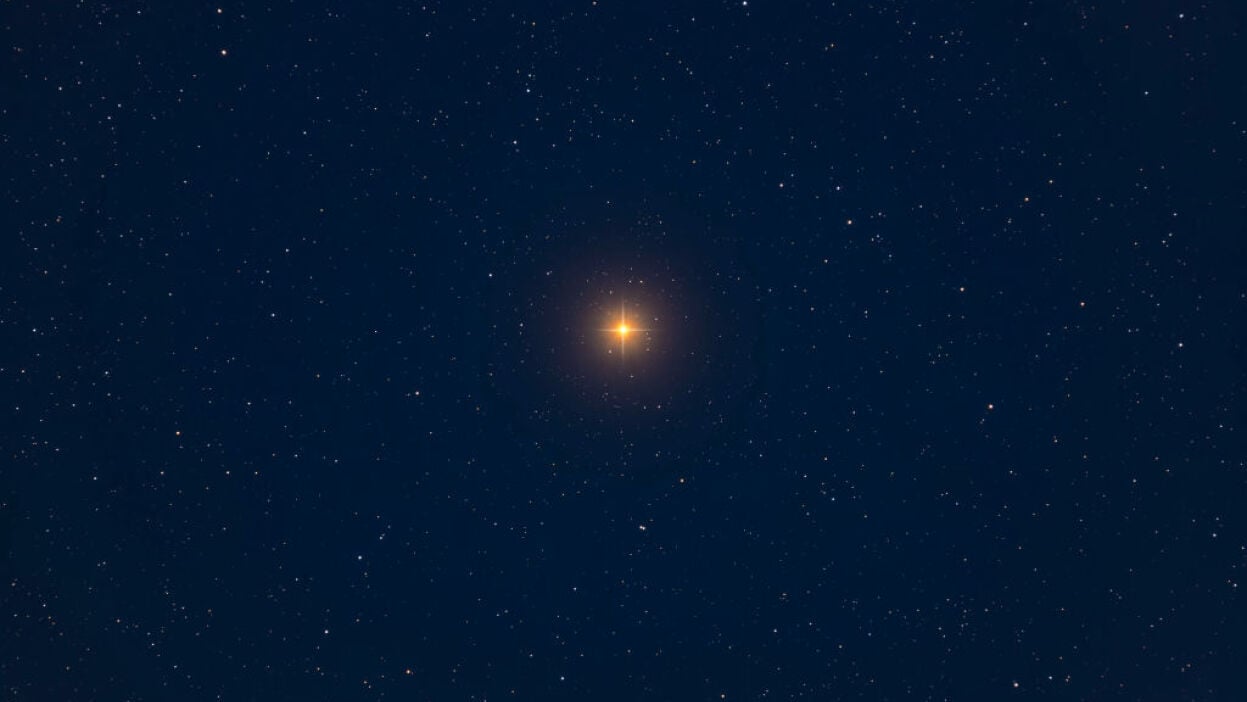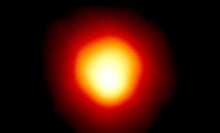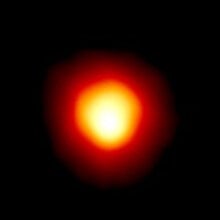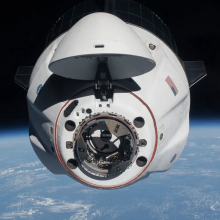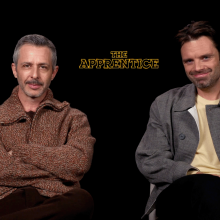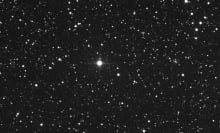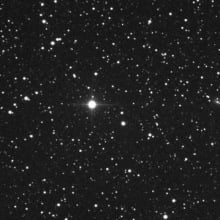A brilliant red star beaming through our night sky is Betelgeuse, an aging supergiant on the shoulder of the Orion constellation.
For years astronomers have watched this star — pronounced "Beetlejuice" just like the Michael Keaton character — with some convinced it's on the brink of a supernova, a cataclysmic stellar death that leaves behind a black hole or neutron star.
The timing of the star's inevitable supernova is up for scientific debate, and NASA suggests it won't happen for some 100,000 years. But astronomers have now proposed another theory for its volatile nature, which explains why this wonder of the Milky Way dramatically brightens and dims. The researchers found clues that the brilliant star isn't actually alone in space. Perhaps, they suggest, it has an unseen companion, periodically clearing dust out of the giant star's way and revealing more starlight.
"Nothing else (has) added up," said Jared Goldberg, an astrophysicist at the Flatiron Institute in New York, in a statement. "Basically, if there’s no Betelbuddy, then that means there’s something way weirder going on — something impossible to explain with current physics."
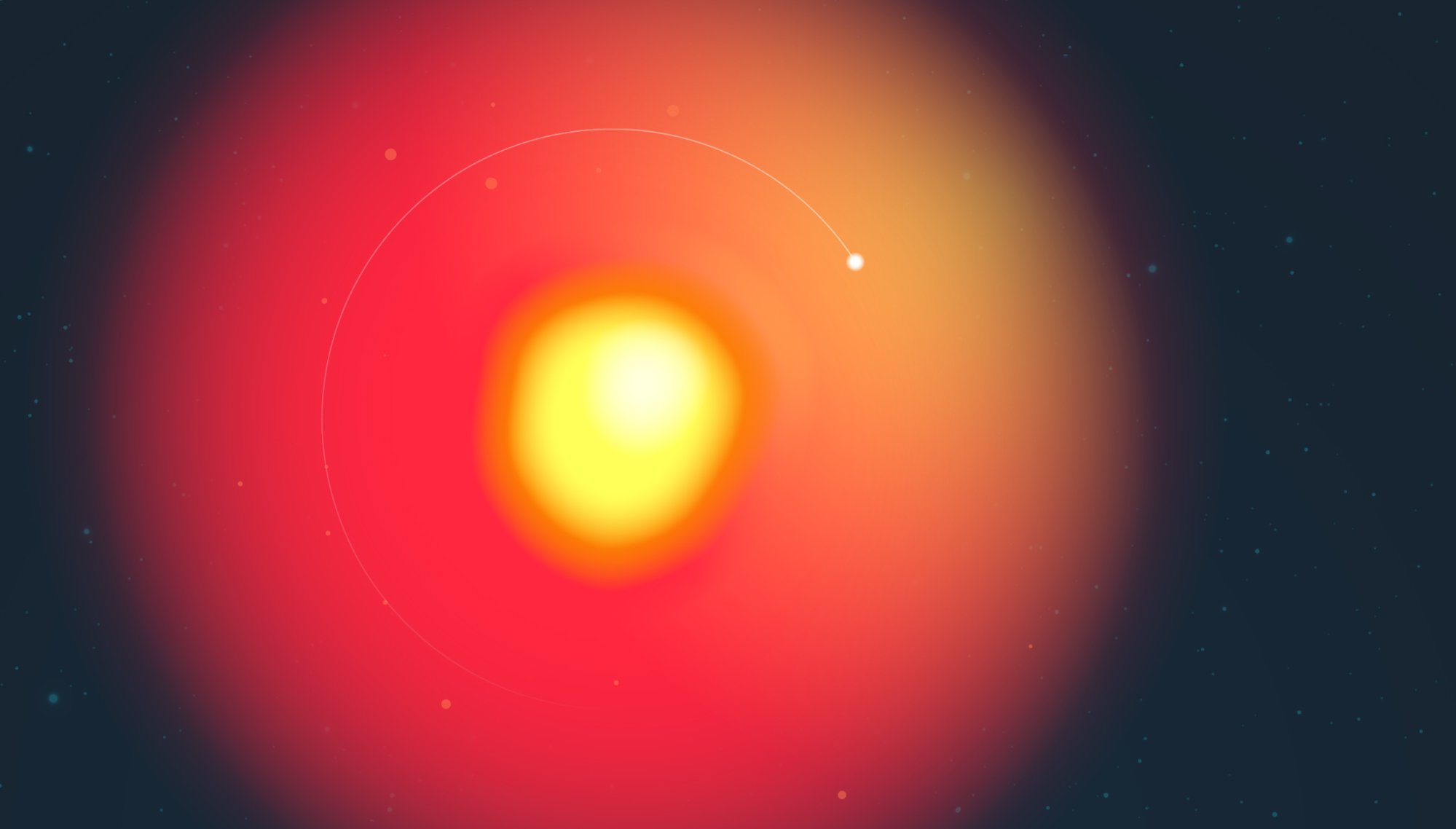
Goldberg and his collaborators from the University of Wyoming and Konkoly Observatory in Hungary have presented their alternate explanation, describing computer simulations of a dust-plowing companion star, in a paper to be published in The Astrophysical Journal.
Betelgeuse is an old star over 500 light-years from Earth. As elderly stars are wont to do, it has puffed out. Scientists say it's so large — hundreds of millions of miles in diameter — that if you swapped it out for the sun, it would reach Jupiter. By comparison, the sun is about 865,000 miles across. What's more, Betelgeuse is about 100,000 times brighter than the sun.
Scientists have seen the star blast material into space. In 2019, Betelgeuse ejected an unprecedented amount of plasma, about 400 billion times more than the sun does routinely through solar flares, according to the Space Telescope Science Institute in Baltimore. The residual dust cloud created a haze that temporarily blocked light from the star, studies showed, making it look dimmer from Earth. About a year later, the star seemed to return to its previous brightness.
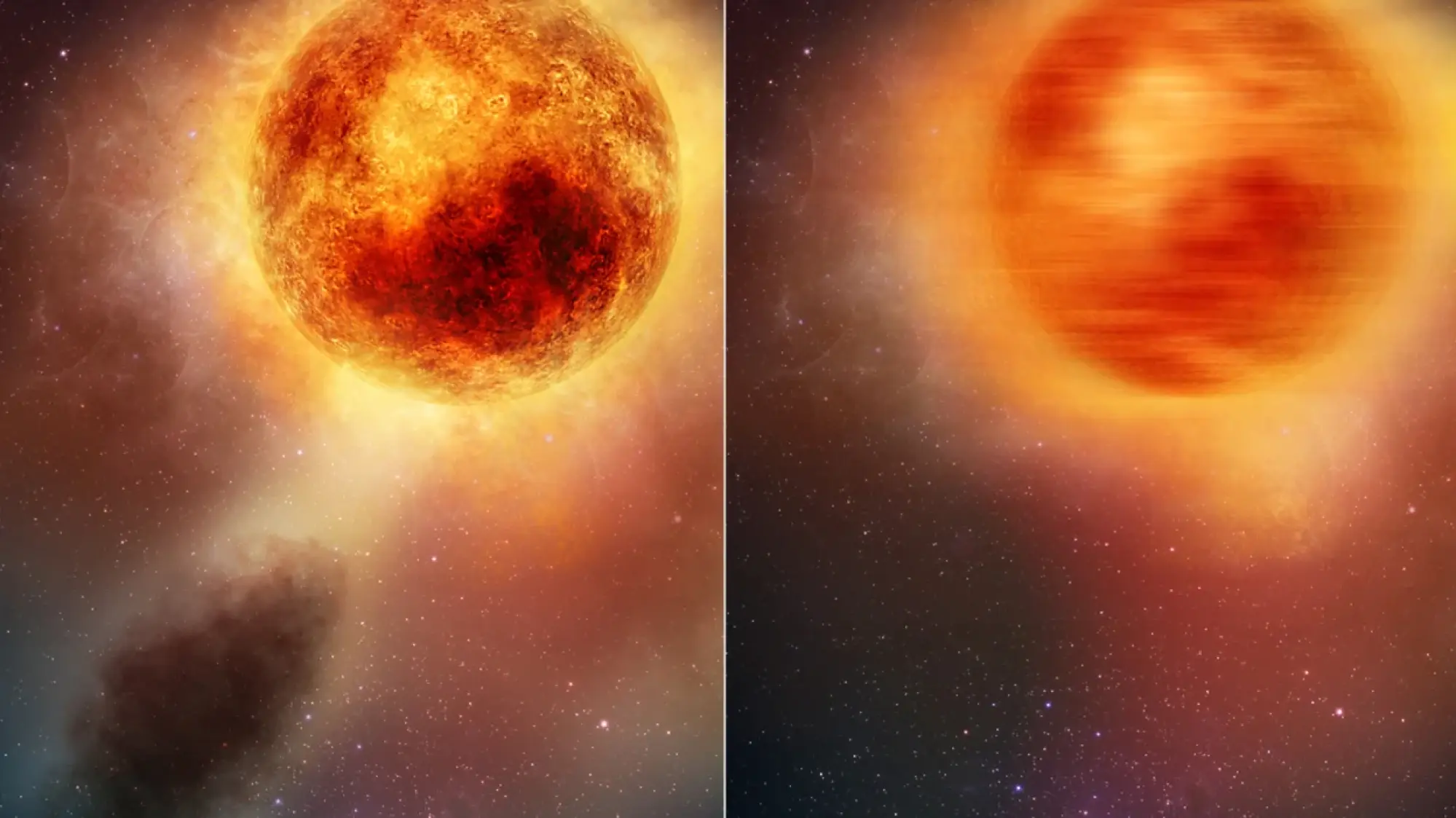
In this latest study, a predicted sun-like star, perhaps up to double the mass of the sun, clears the dust out of Betelgeuse's way, making it appear brighter. The team calls the hypothetical star Alpha Ori b, although Goldberg has given it the pet name "Betelbuddy" for fun.
"Basically, if there’s no Betelbuddy, then that means there’s something way weirder going on — something impossible to explain with current physics."
Astronomers can guess when Betelgeuse will die based on its pulse. Because it's a variable star, its nature is to fluctuate in brightness. But the tricky thing about Betelgeuse is that it has two pulses — one that "beats" about every year and another seemingly following a six-year pattern.
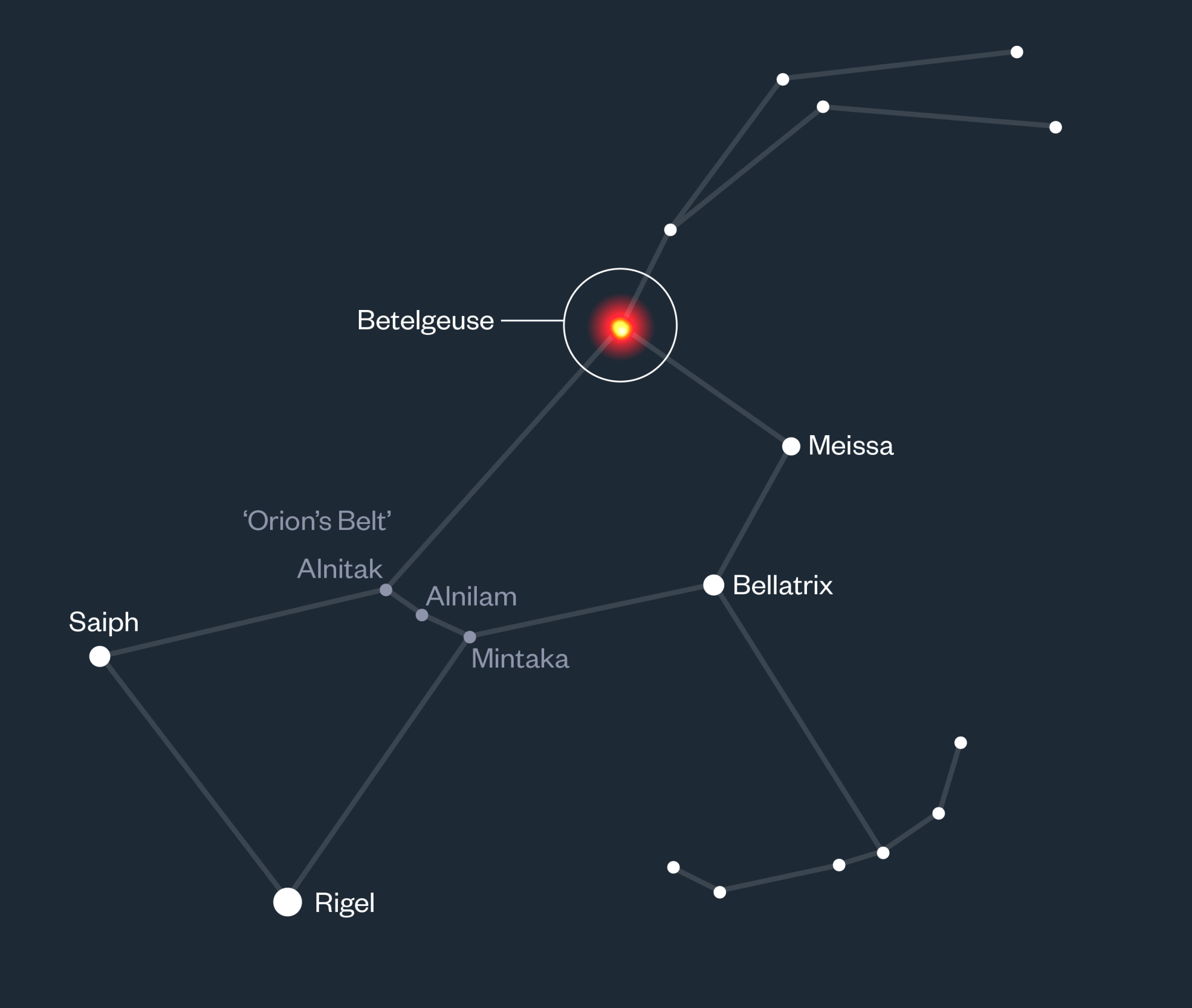
So the question is which one of these pulses is the star's fundamental heartbeat. If it's the shorter one, then the longer one is likely the result of something else external.
The team considered other processes, such as sloshing in the star's interior and changes in its magnetic field. In the end, the scientists concluded the more protracted pulse was likely caused by another star.
If Alpha Ori b exists, no one has seen it. The team is busy writing proposals to gain telescope time so they can look for a small star that could have been hiding in Betelgeuse's glare. An opportunity to investigate their inferred companion star is coming up in December, the scientists say.
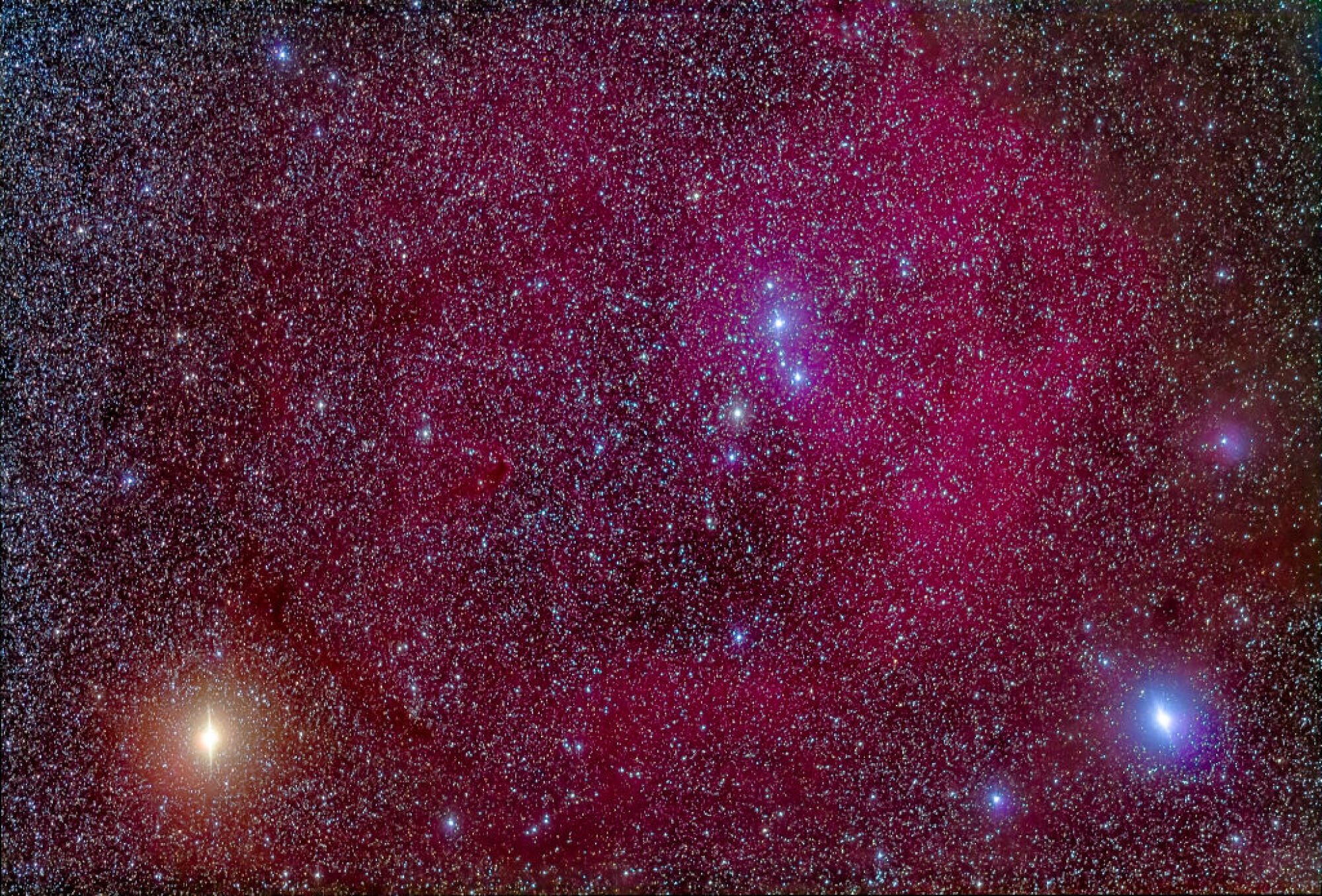
Meredith Joyce, one of the co-authors, has a rather exotic idea about what Betelgeuse's partner could be: a neutron star, the core of a star that has already exploded in a supernova. But if that were the case, astronomers would have expected to find it in X-ray observations. No such evidence has shown up.
"I think we should look again," she said in a statement.
If Betelgeuse turns out to be one of a pair, this reporter humbly suggests yet another name for the mystery star: Otho.
